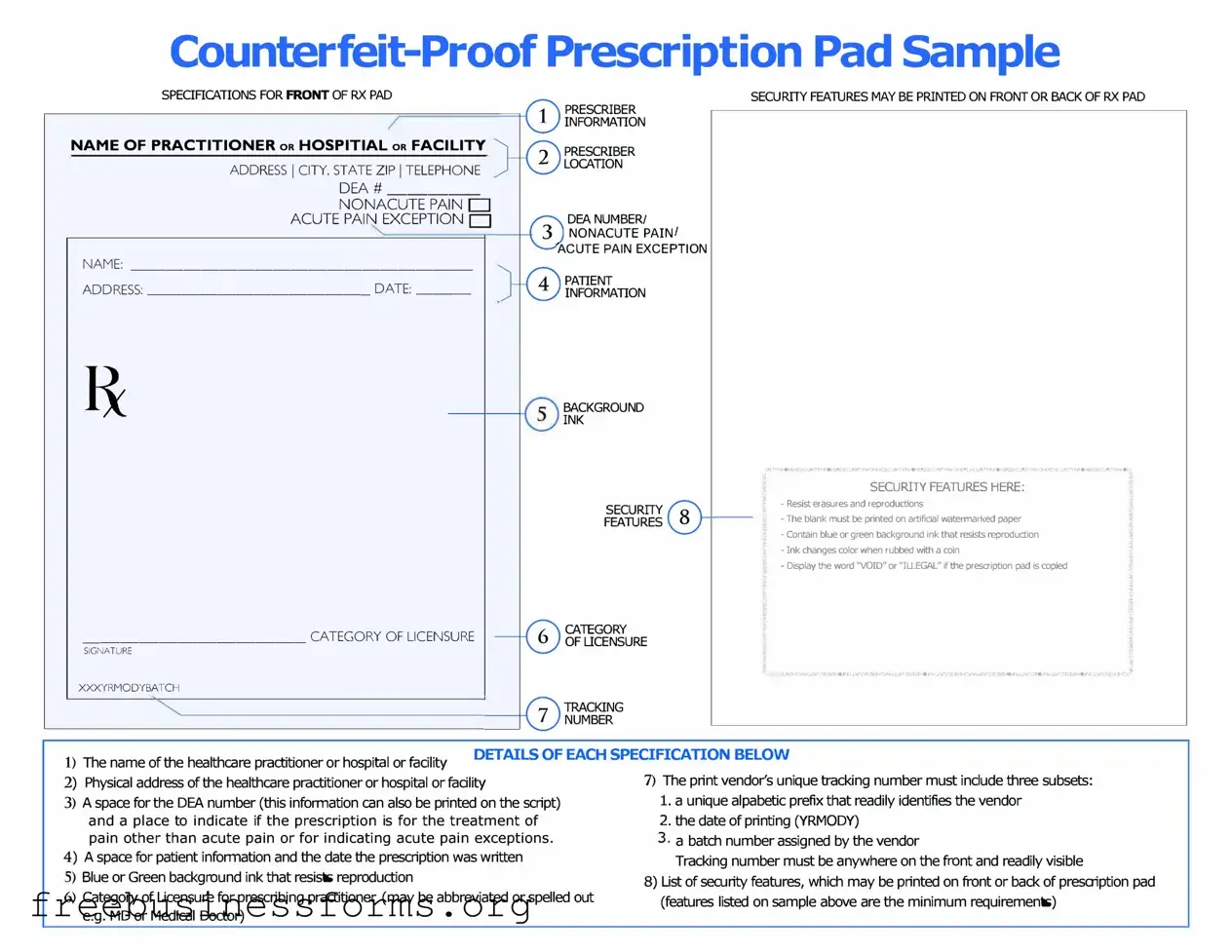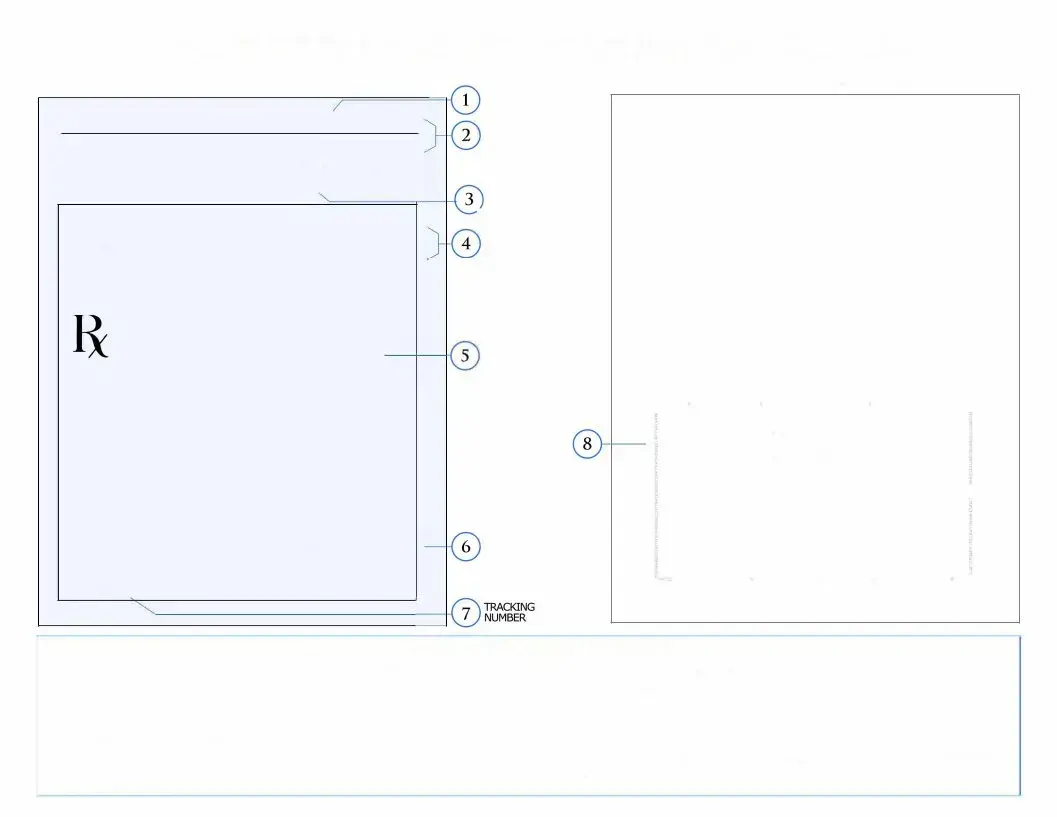The Prescription Pad form plays a crucial role in the healthcare system, serving as a vital tool for medical professionals when prescribing medications to patients. This form typically includes essential information such as the patient's name, date of birth, and the specific medications being prescribed, along with dosages and instructions for use. Additionally, it often contains the prescribing physician's details, including their name, contact information, and signature, which are necessary for the prescription to be considered valid. The form may also feature spaces for refills and any special instructions, ensuring that both patients and pharmacists have a clear understanding of the medication regimen. Properly completing this form is essential not only for patient safety but also for compliance with legal regulations surrounding prescription medications. Understanding the components and significance of the Prescription Pad form can help both healthcare providers and patients navigate the complexities of medication management more effectively.

